I suppose I’ve always been miniature-painting-curious–even all the way back to my first trip into a game shop in junior high. Unfortunately, none of my friends played games back then, so the cool-ass D&D manuals, ASL expansions, and metal minis waiting for a coat of paint would have to wait till adulthood.
When I finally DID get into gaming, it seemed there was always something keeping me from diving into full-on miniature painting–to the point where it became kind of the last bastion of resistance against taking up every single nerd hobby there is (except for LARPing, I’m still holding out on that one–assuming the games I play with my kids don’t count).
Then, two years ago, at 37 years old (only a few months before my wedding, and right at the time Laura and I decided to have a baby) I figured, hell, why not, let’s go ahead and take up Warhammer…
As it turns out, one does not simply dip their toes into hobby wargaming–the most expensive and time consuming of all potential nerd hobbies. But when has expense and time involved ever stopped me?
Plague Monks–My first models.
Warhammer is a game where four alliances basically beat the shit out of each other for 10’s of thousands of years (from the dark past to the dark future) in the most ridiculously over the top grim and dark ways. The alliances are: Order, Destruction, Death, and Chaos. And, since I knew from the moment I discovered Bolt Thrower in 1997 that I’d be playing Chaos, I decided to start with Skaven, weird little Rat-men that make cool little steampunk gadgets to spread filth and chaos throughout their fantasy world. Not only did their models look really cool, but their “Start Collecting” (notice, Warhammer doesn’t call it “Start Playing”) box had a LOT of options for customization.
Every army in the game has “battleline” units–the rank and file soldiers that do the heavy lifting/support your big monsters, and Plague Monks are the battleline unit that represents the Skaven soldiers most obsessed with spreading filth and disease. They also didn’t look all that hard to paint compare to other more detailed models.
Up first I painted this guy to test out my color ideas and see what this miniature painting was all about:
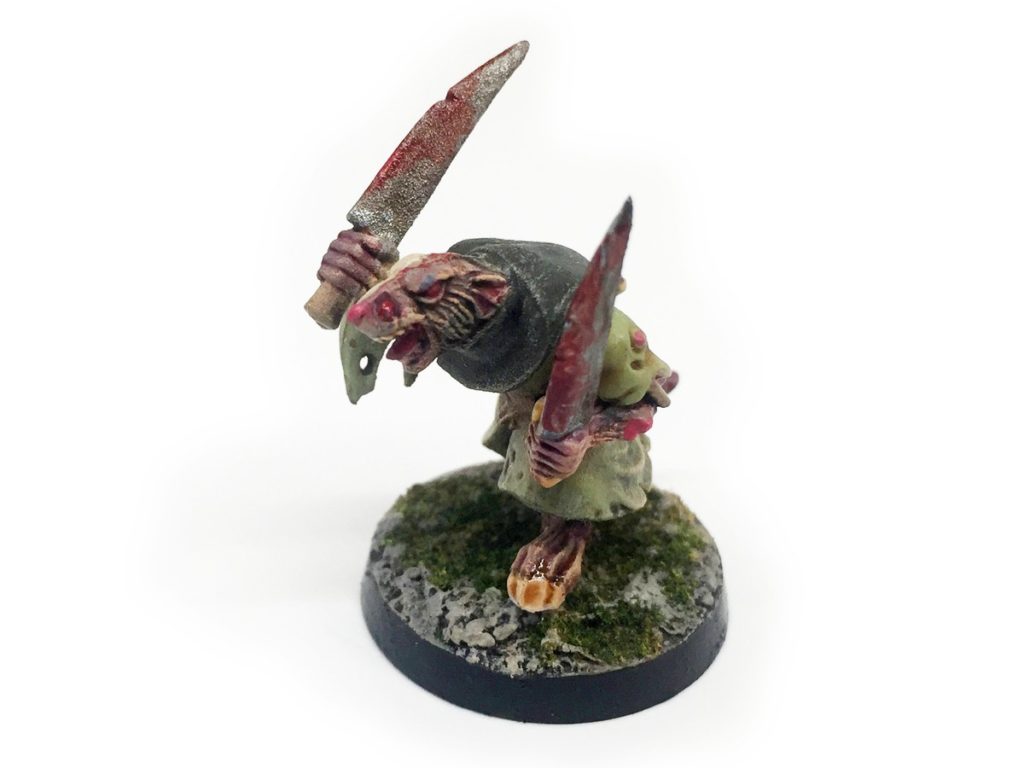
Honestly, I think he turned out great! Hell, I can’t even say that I’ve improved all that much in the 2 years since I painted that guy. However, most of my success painting it was due to my attention to detail and my endless patience in fixing my mistakes–of which I had a lot to fix on this first model (one thing I have improved on in leaps and bounds is brush control…it probably took me 2-3 hours to paint that guy, and now he should be doable in under 30 minutes).
My biggest issue is that I primed my Plague Monks (indeed, my entire Start Collecting set) on a windy day from too far away, and they all ended up way too grainy (as you can see on his sword).
Perfectionism getting the better of me, I soaked all the rest of my Skaven models in paint stripper (luckily I used plastic glue putting them together…paint stripper would have dissolved super glue!) re-primed them properly, and started painting the rest. Here is my first unit of 10 fully painted Skaven Plague Monks:
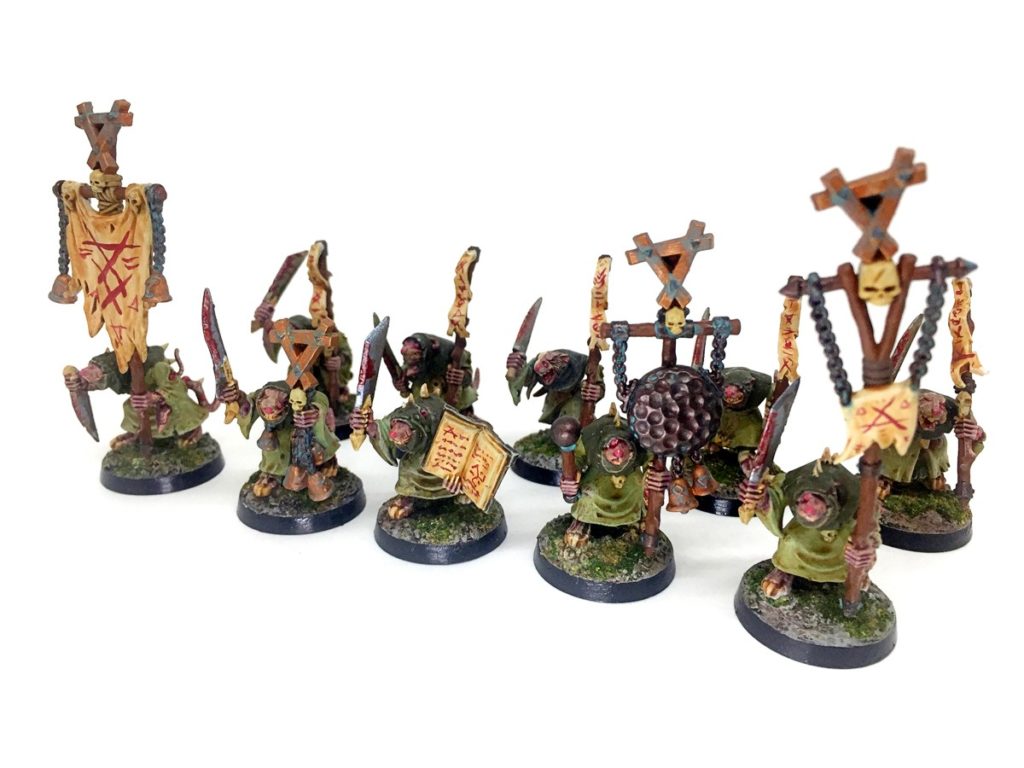
And, for the painters out there, here are the colors I ended up going with (all Citadel paints…they are the highest quality out there despite their shitty paint pot design, and I picked up a huge amount super cheap in my local store’s going-out-of-business sell):
- Flesh: Rakarth Flesh with a Carroburg Crimson wash and Kindleflame highlights.
- Robes: Nurgling Green
- Hoods: Castellan Green
- Staves: Mournfang Brown
- Teeth, claws, scroll: Ushabti Bone
- Seraphim Sepia wash over all non skin portions.
As for the details, on all my models I base them with clay cat litter (hammered down before sprinkling on to give textures from dust up to “rock” chunks), primed brown and then highlighted up to white/gray. I then give it patches of dark/light flock to add some green.
All metal in all my models is aged with Typhus Corrosion, highlighted with Ryza Rust and Nihilakh Oxide where applicable. Also, after these Monks, I cut WAY back on the blood details as, even in a game as grimdark as Warhammer, too much blood can just be a bit silly.
I mentioned that the Skaven set had lots of customization options, and for my monks I decided to try out magnets to allow me to switch between double swords (probably the better option) and swords and staves (the cooler looking option):
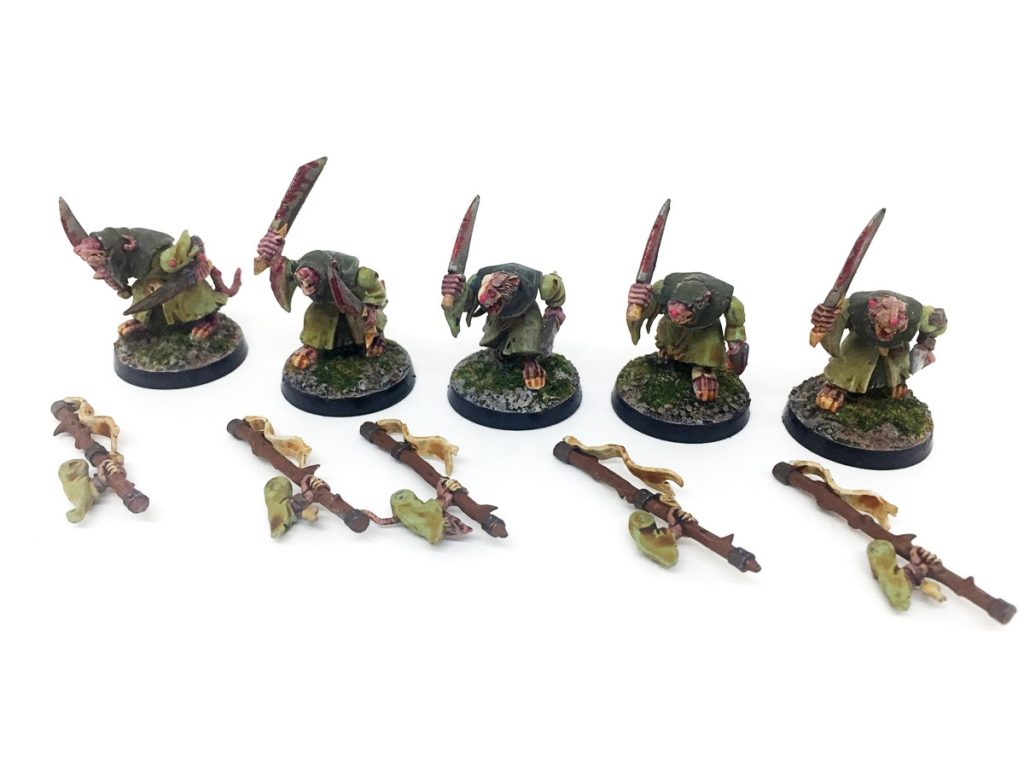
If I had to do it over again, I’d probably just build them all with swords, but it was fun to put the tiny rare earth magnets in. And, a note, you can use different size magnets to get more grip, I probably should have used a bigger magnet in the bodies than the tiny one that was all that would fit in the arm.
Clan Skyre (the Steampunk Skaven) and More Magnetizing
Skaven are split up into clans, so up next I decided to try out a model from “Clan Skryre”–the Skaven clan with the most over the top contraptions. This is a Warpfire Thrower, painted the same way as the monks this time adding in some XV-88 as a light leather color (I decided all my Skaven would have Nurgling Green cloth to tie them together, with each clan having a different accent color). I also used Warpstone Glow highlighted with Flash Glitz Yellow for the green smoke (and all further Skaven “Warpstone green” stuff):
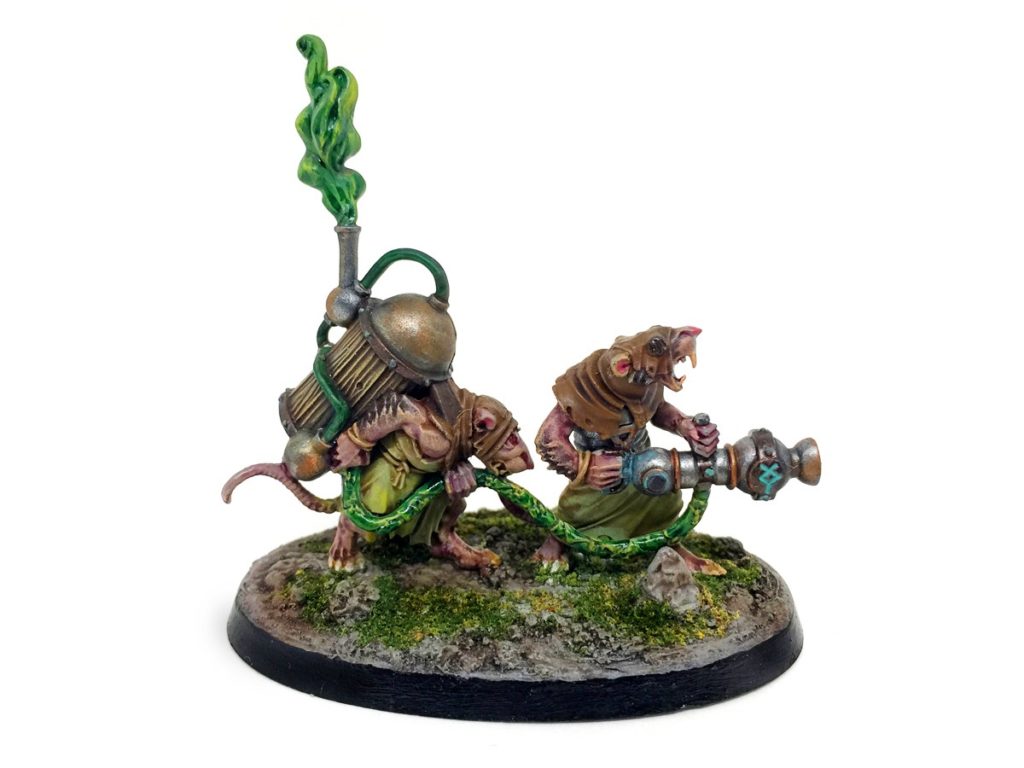
I really liked how this turned out, and moved on to a few more magnetizing projects, the first being the Grey Seer Skaven wizard from the giant Screaming Bell war machine:
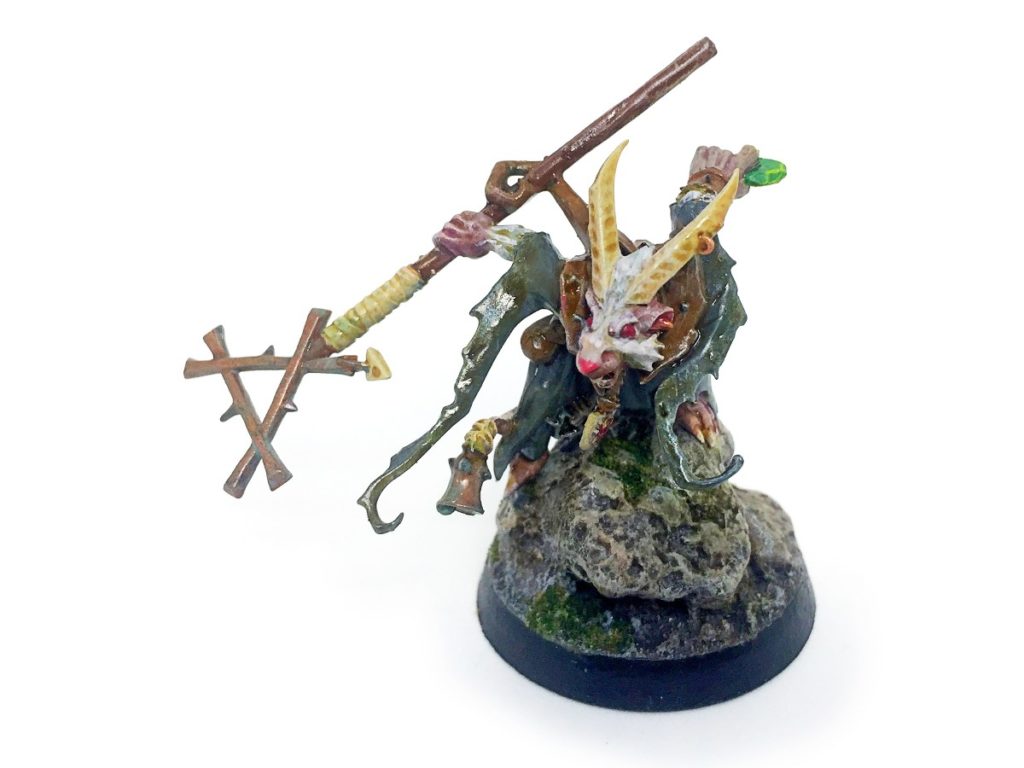
I think I over-applied my Seraphim Sepia wash on this one to the point where it ended up kind of glossy, but I love the model over all–such a fantastic pose! As I said, I stole this from the Screaming Bell kit (that I have fully magnetized, but not painted yet…we’ll see that on a future post!), and, I wanted to make sure I could use him with that kit if I wanted to.
Thus, I magnetized the rock he was standing on and gave him a little Eshin Nightrunner hand with a shaved down throwing star to represent a chunk of Warpstone for him to eat, allowing me to use him alone or with the Screaming Bell:
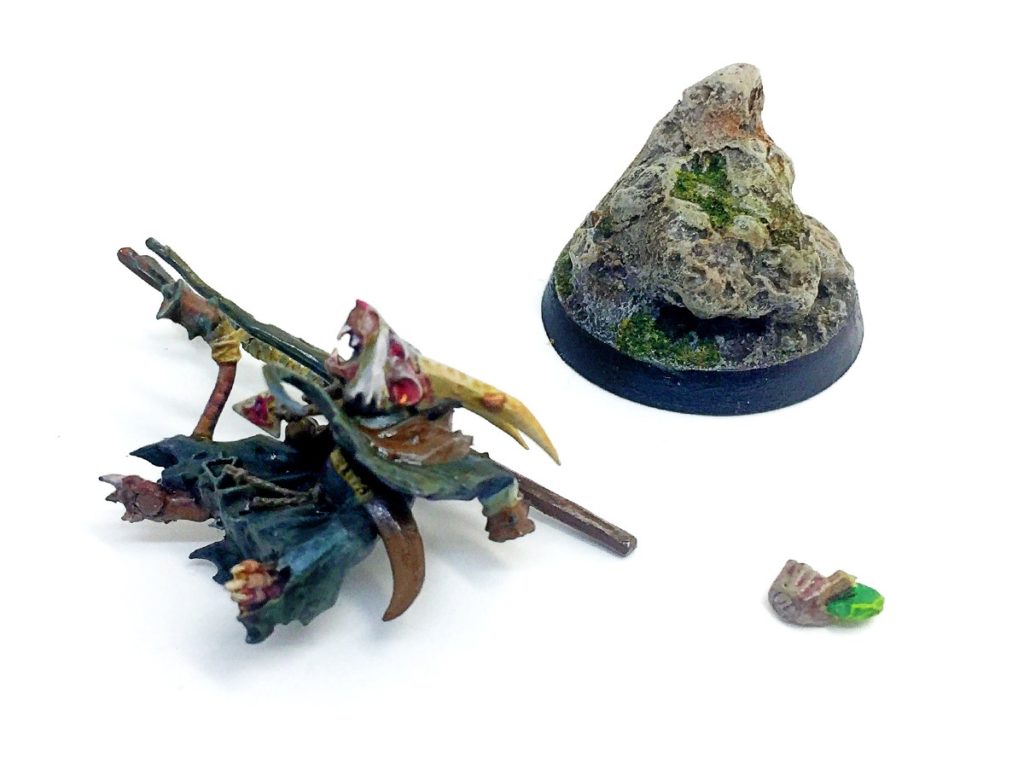
Flush with new Magnetizing confidence, I moved on to magnetize one of the medium war machines from the Skaven box, another Skryre bit of ridiculousness, the Warp Lightning Cannon:
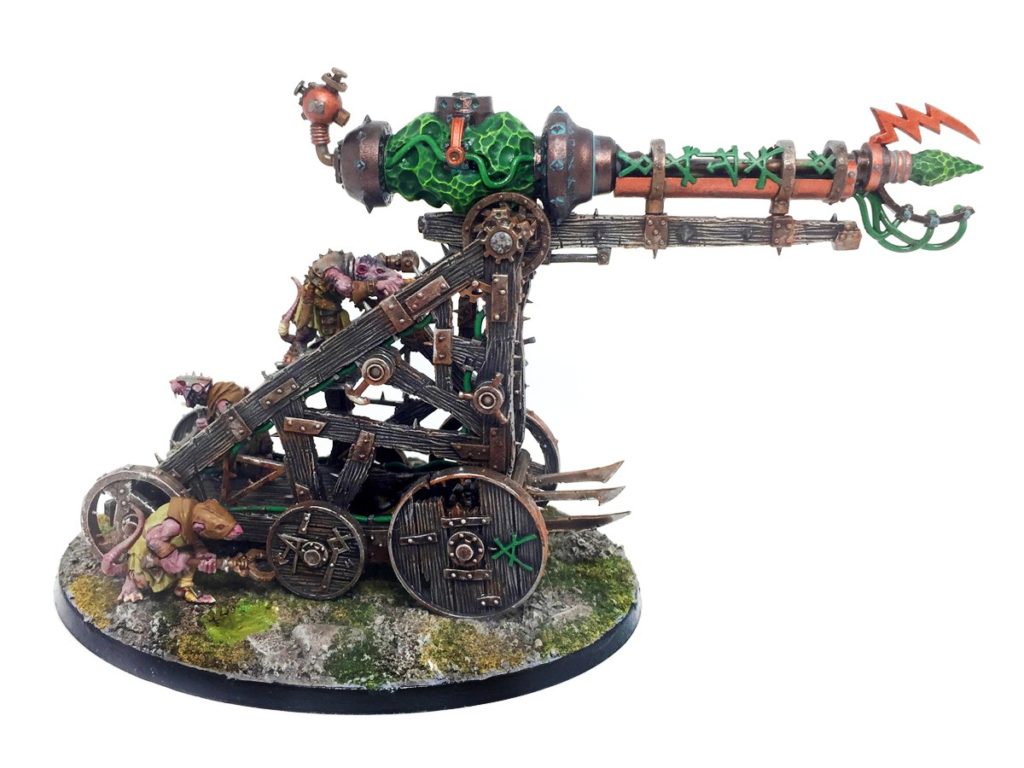
I kept the center arm unglued so it could rotate, and then magnetized EVERYTHING:
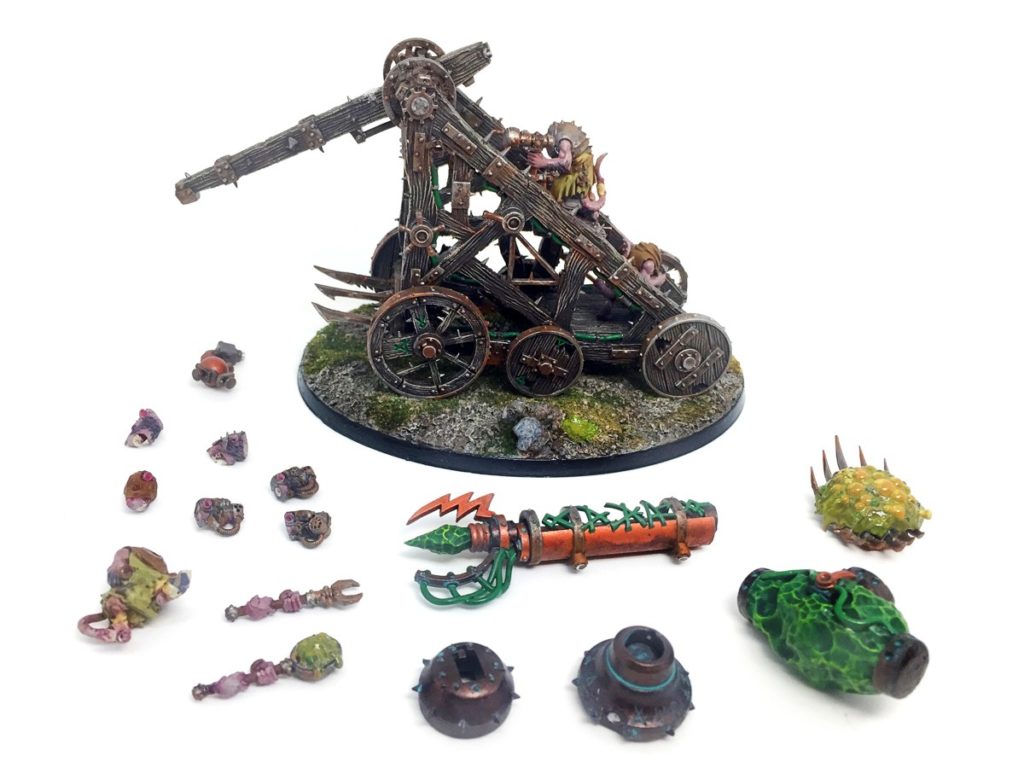
Did I need to magnetize the heads even so I could put gas masks on the rats when the model turned into the disgusting filth spewing Plagueclaw? Probably not, but it did give me a certain satisfaction to be able to switch EVERYTHING when I switched between the models:
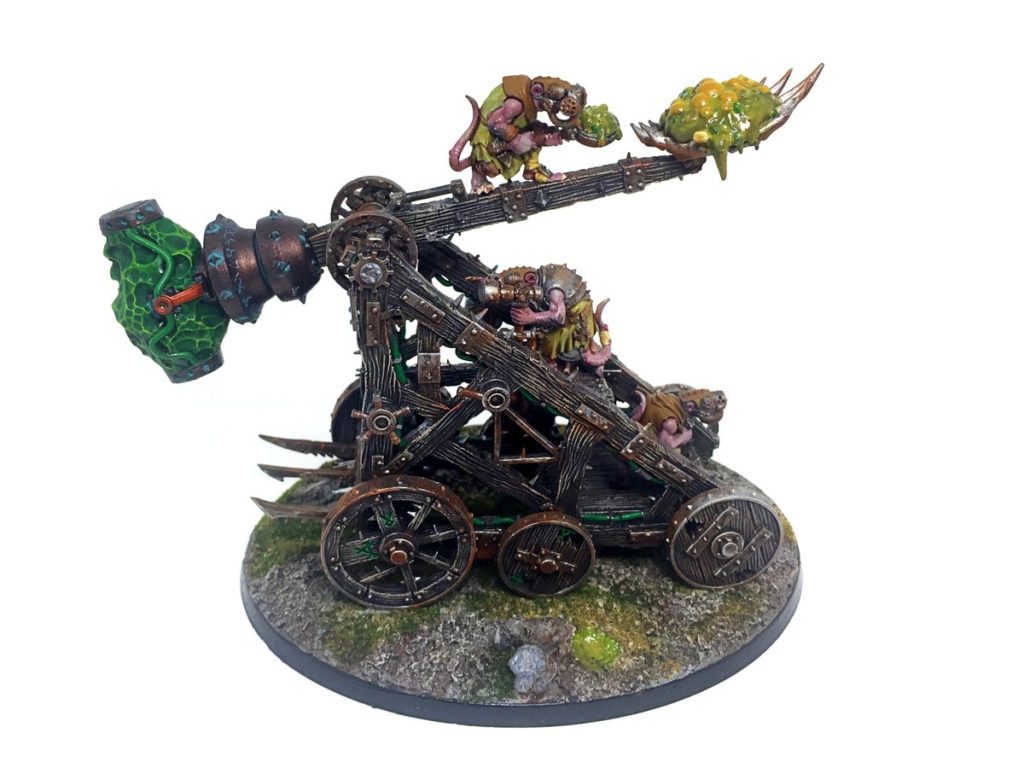
One note on this one…I was a little disappointed with how all the dirt and rust I put on the metal ended up just kind of blending into the wood. I don’t want clean metal, but maybe a few more silver highlights would help.
More Models and Getting Bored with Battleline
I then decided to quit screwing around with the magnetizing and made a push to finish my army, starting with the super cool Skaven Warlord (now Clawlord with a useless meat cleaver thanks to the latest rule updates) model:
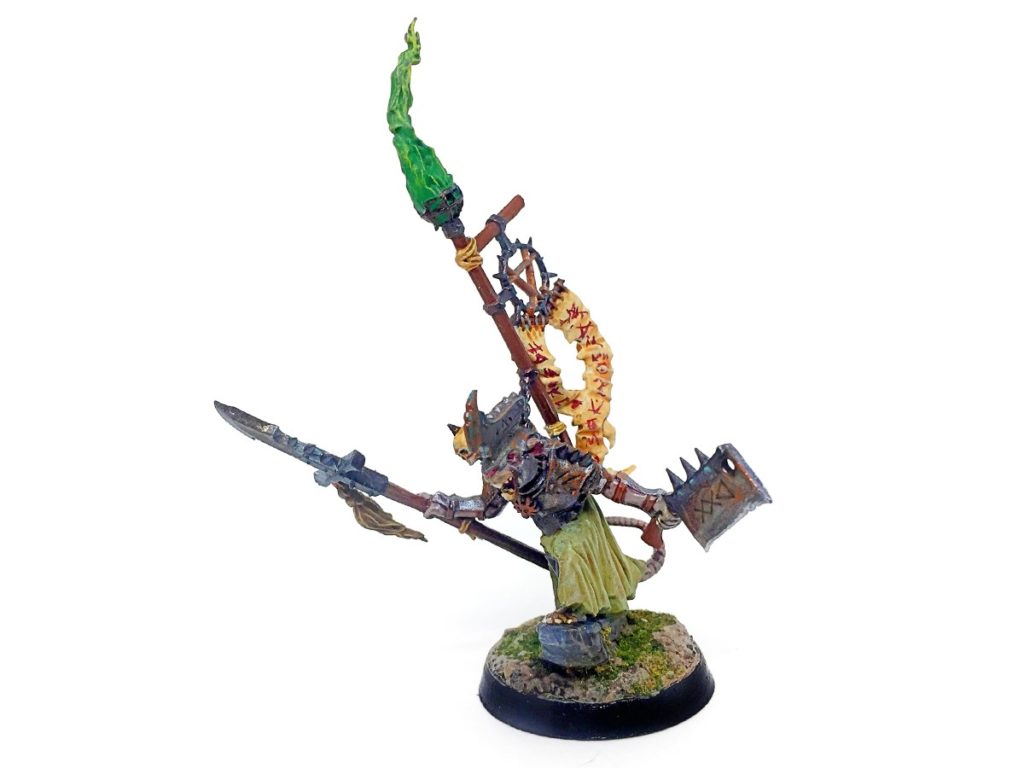
You can see where my lack of traditional highlights (I do a bit of drybrushing sometimes) kind of makes his green cloth one dimensional. I have a weird aversion to brush strokes, even though you can’t see them on a tabletop. I still haven’t come up with a good solution, but the models still look pretty good without highlights and it saves me a ton of time.
And saving time is great when it comes to Skaven. I tackled 20 Clanrats all at once next, and even my much vaunted endless patience got tested painting the same thing over and over:
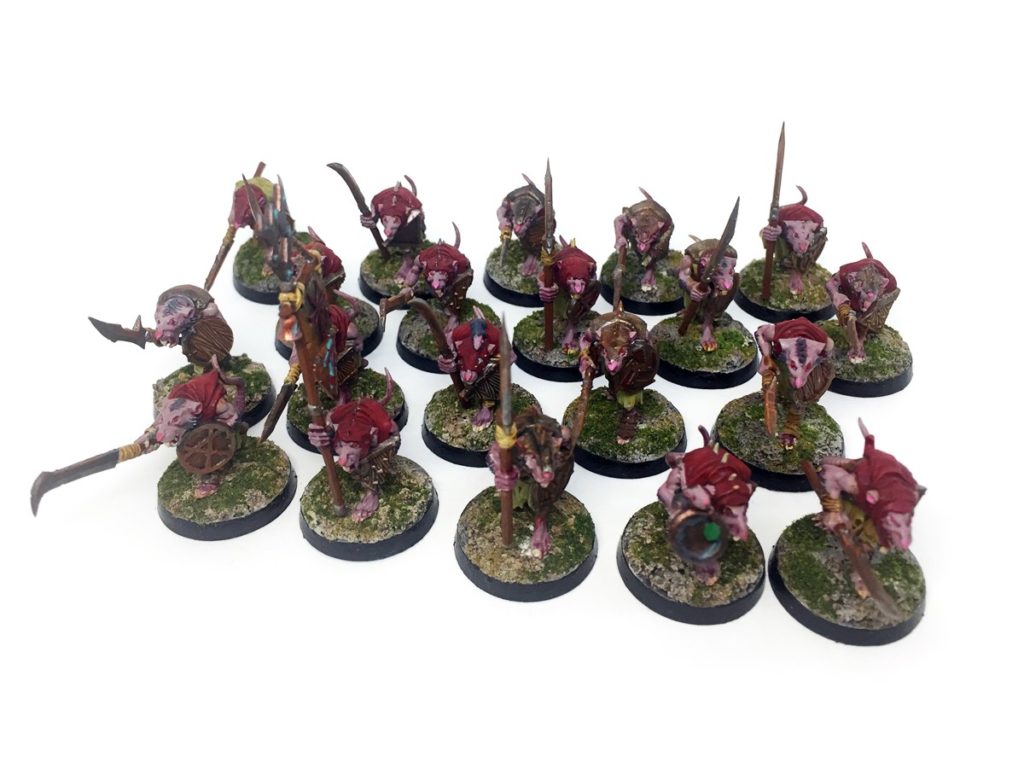
I really love the Khorne Red on these guys (the color I picked for the warlike Clan Verminous), and honestly they painted up reasonably quickly even with all their little details. So, 20 down…100 more to go…
Tired of painting battleline, I moved on to a few more individual units, starting with the (now rule-less) Poisoned Wind Mortar:
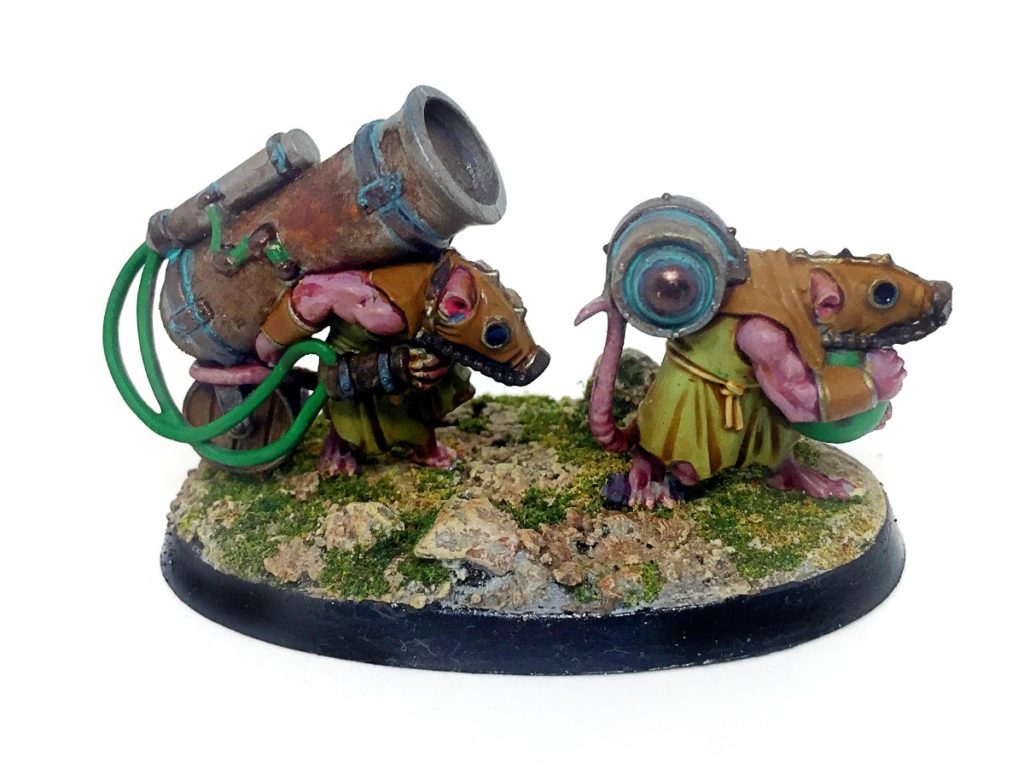
One thing I love about painting Skaven is how you can just slap a bunch of corrosion effects on your models to really make a simple paint job seem much more complex!
A very steampunk looking Skryre Warlock Engineer painted up pretty quick:
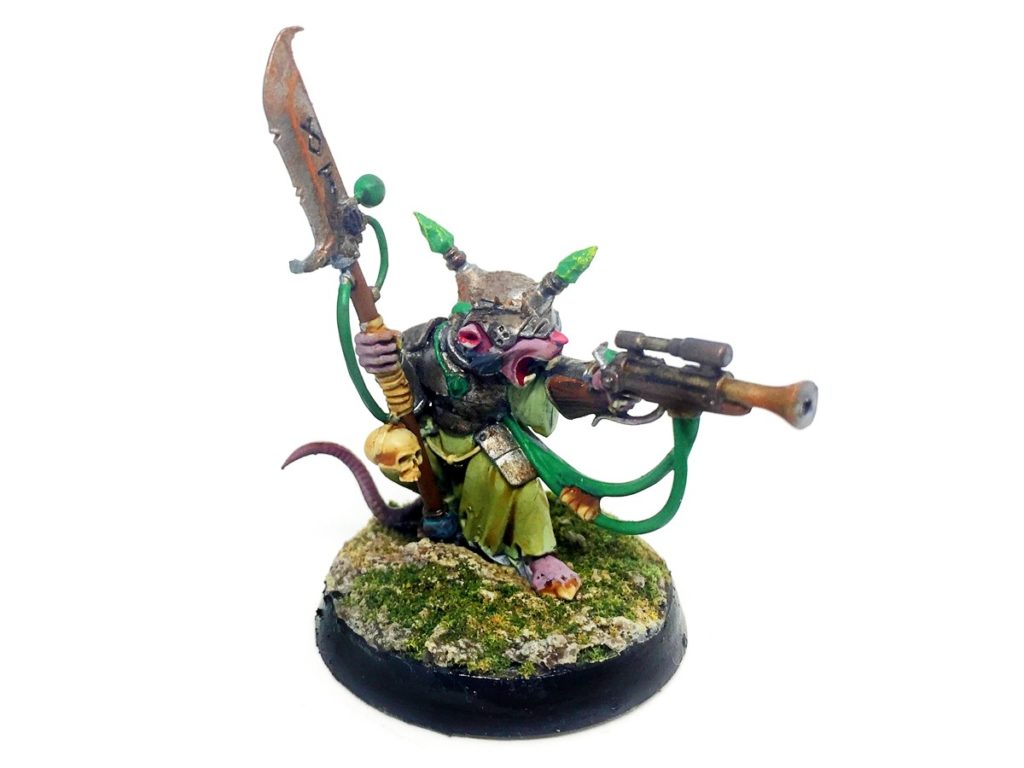
Leading to my first metal models, a pair of Ratling Gunners:
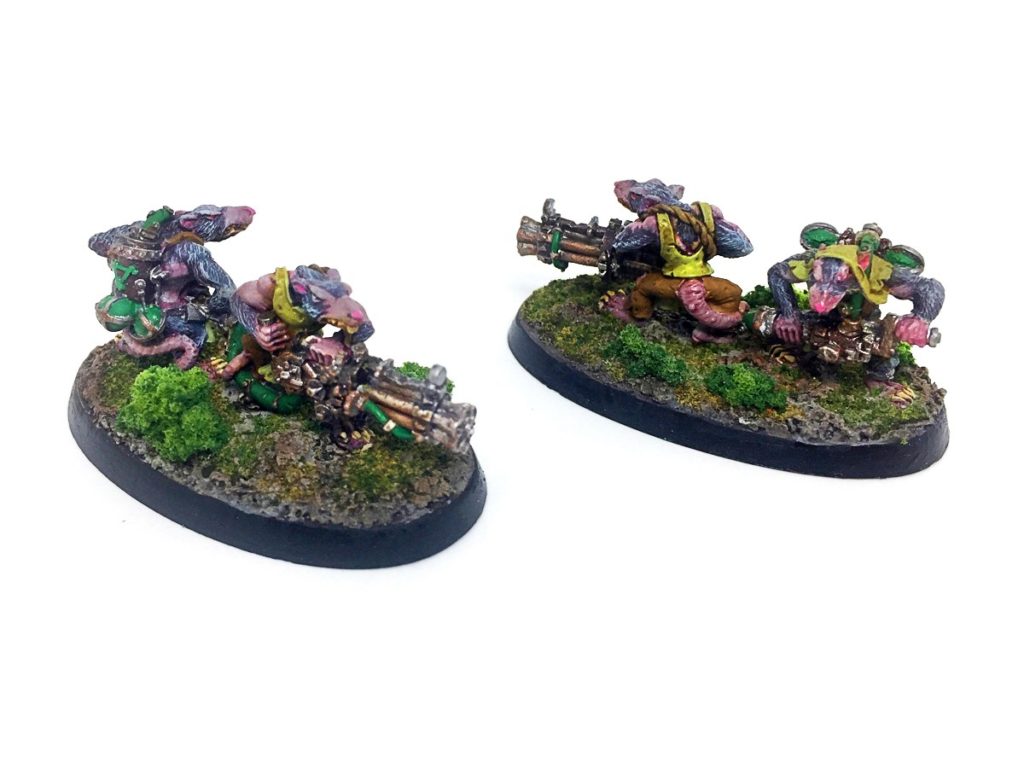
These are older models with the “monkey” rat faces, but they ended up looking fantastic with a coat of paint. Before I got into painting, I figured metal models would be the “good stuff” but not only is metal a HUGE pain to assemble, but the paint will easily chip off it if you drop or hit it on anything. Plastic is DEFINITELY the best material for this stuff.
Upping my Basing Game
Finally, I decided to try painting what was (and is) to me the coolest Skaven model, the Doomwheel! A giant hamster wheel that rolls around the battlefield squashing shit and spraying out warp lighting. It even has a horde of rats running in its spiked wheels:
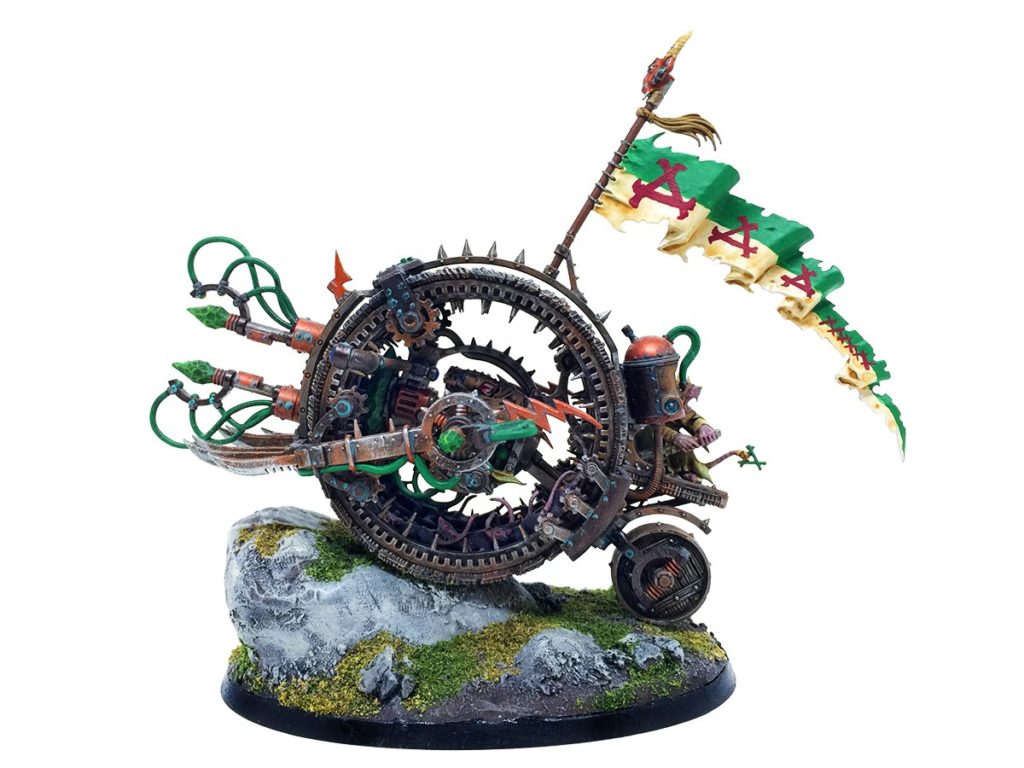
Thankfully I saved this one for later as I was wise enough by now to realize I had to paint it in parts (seriously, do NOT assemble this one before you paint it).
This one also got me to be a little more inventive with my bases as I made a big clay rock for it to ramp up and over, adding a lot of dynamism to an already super cool model.
I pushed the basing even further with my Warpgrinder Weapon Team by actually cutting off half of the original model and making them look like they are actually coming out of the ground (which they do in the game):
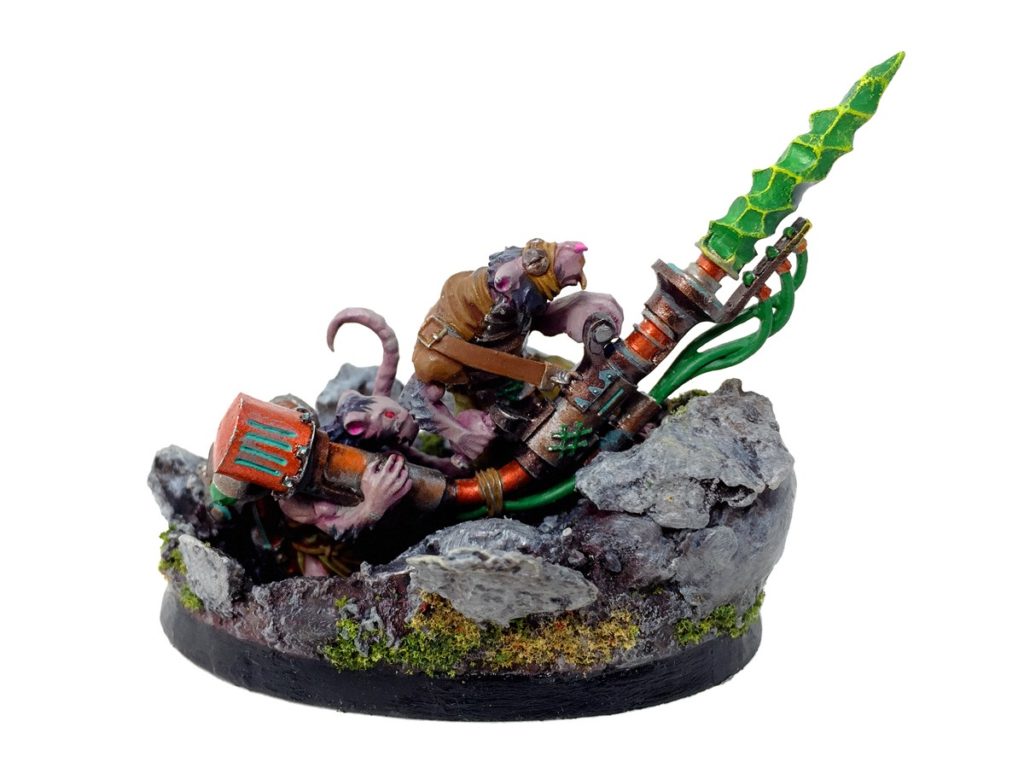
The last Skaven I painted was the “Ikit” Arch-Warlock, a super cool old metal model that was, as everyone said, a real hassle to put together:
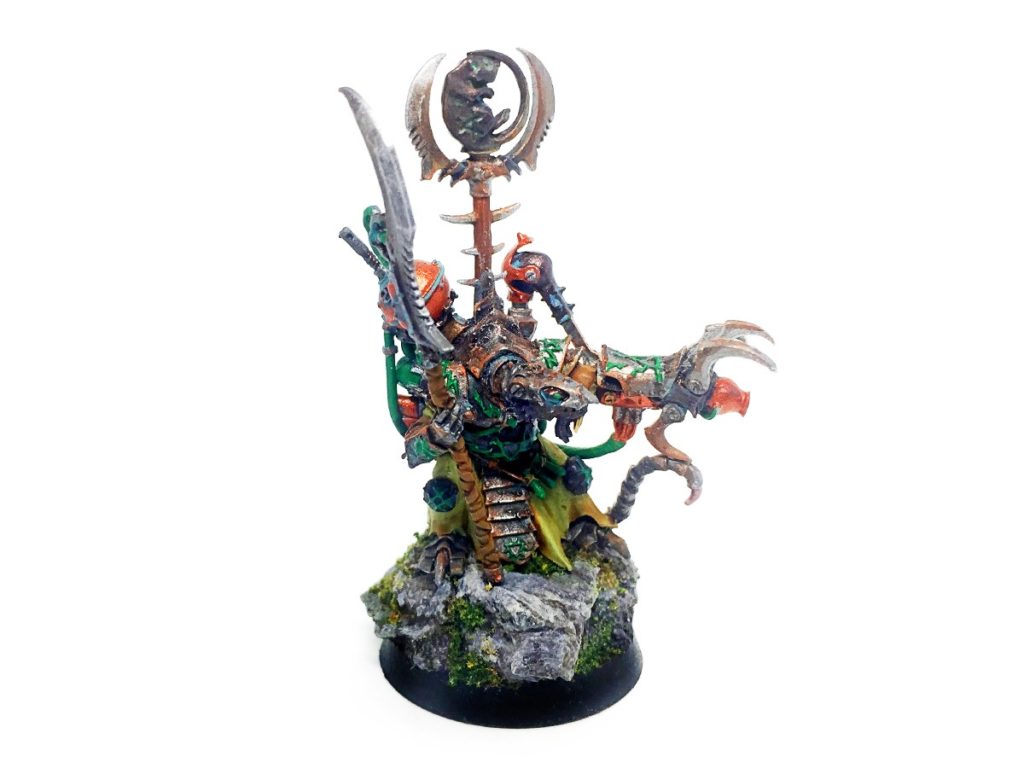
This one got a bit dirtier than I wanted–some of the details around the neck and back ended up coming off as kind of jumbled, but overall I’m happy with him.
And, he looks fantastic riding on top of his summoned Balewind Vortex:
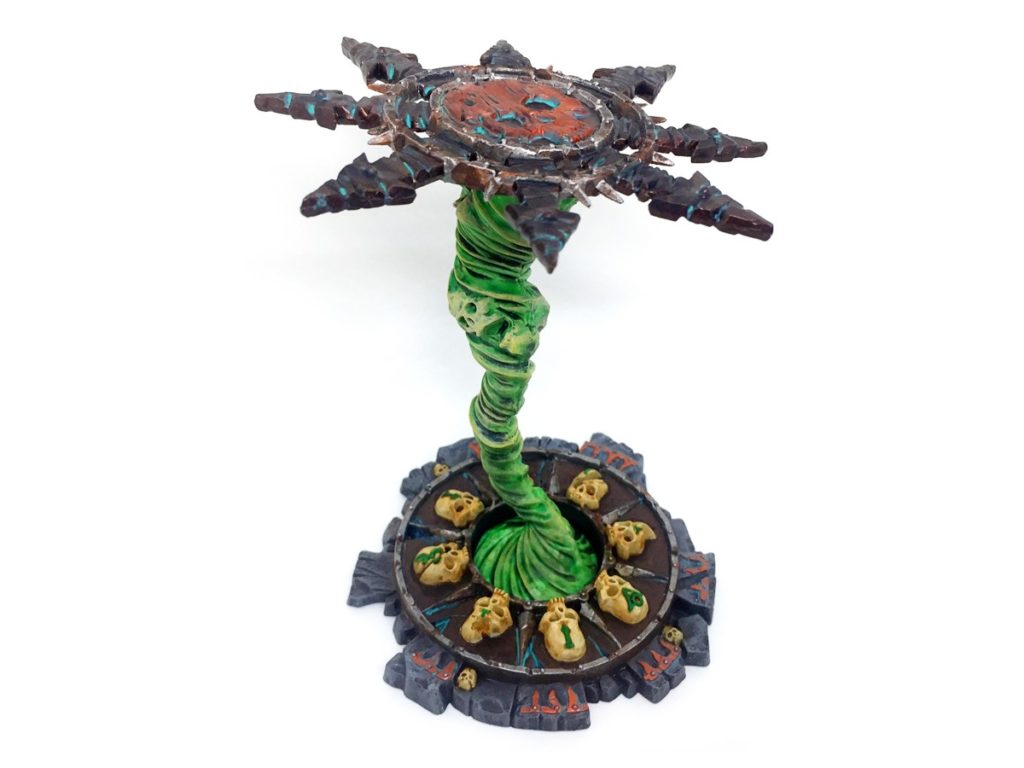
I used the new Hexwraith Flame paint for the tornado…which was way too “slimer green” for my taste. However, I toned it down with some Seraphim Sepia and Ushabti Bone drybrushing and it ended up really popping (in a good way).
A Wargamer’s Job is Never Done
That’s all the Skaven I have painted over the last two years–though I’ve got PLENTY more to paint. So far I’ve been playing my Skaven as general Chaos, using Nurgle Plaguebearers to fill out my battleline slots, but now that they have new rules for mixing all the clans, it looks like I’ll have to go back and paint up some more Clanrats/Stormvermin. Also on deck is for me to finally paint up my Screaming Bell/Plague Furnace, and even a few Storm Fiends before moving on to the Forge World Skaven stuff (which I love). But that’s down the road, up next for this blog series is a look at my Nurgle stuff, painted concurrently with all these Skaven models!
I imagine I’ll finish this series up sometime in 2040 when the kids finally end up moving out…
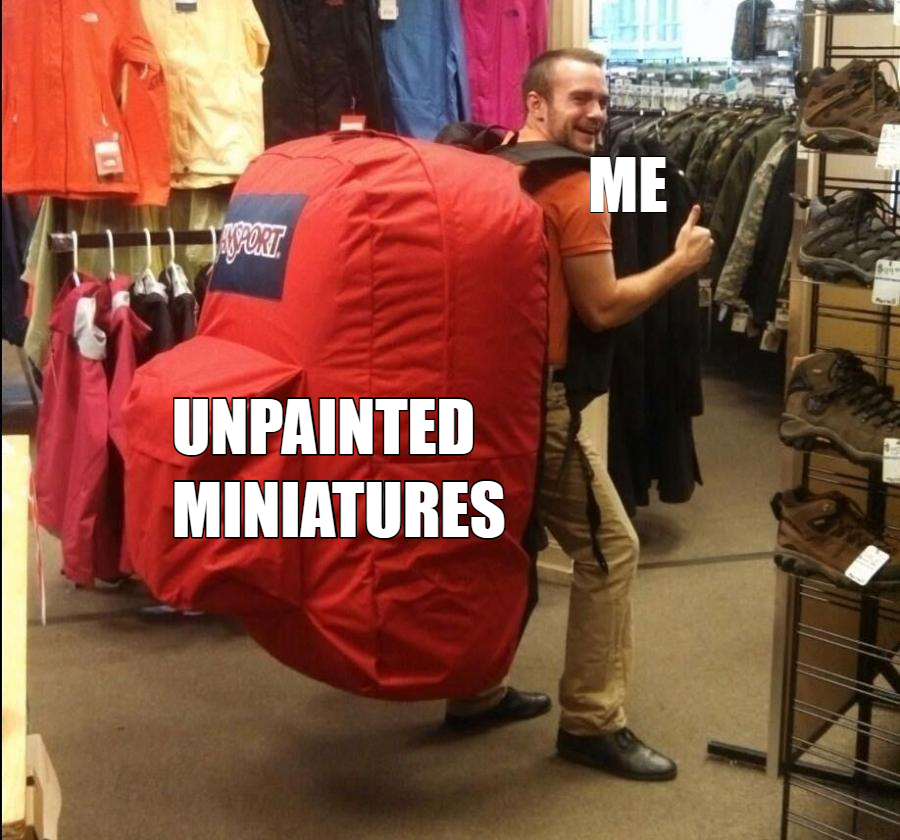

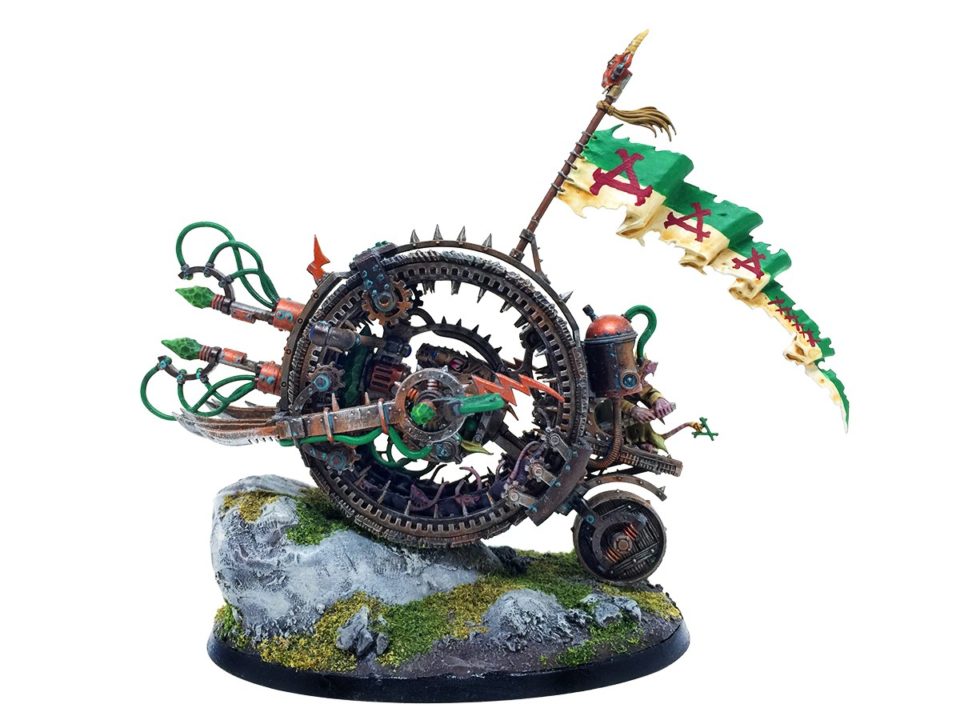
4 Comments
Nice Job! I love your modular take on these models… I wish I was smart enough to have done that with some of my models.
That Skaven set especially lent itself to that…I love when GW makes a model that lends itself to getting a 2 for 1 like this.
Your models look great! What do you use to make the rocky bases?
I used to use ground up clay cat litter (ground up to give a nice gradient of rubble sizes), but lately I’ve been using quick dry cement. It doesn’t really act like cement, but it’s super cheap and has a really good mix from fine powder up to small rocks. Larger rocks I sculpt out of polymer clay, or, sometimes air dry clay/plaster if I am feeling lazy (though, those tend to dry with cracks, so it’s not ideal).